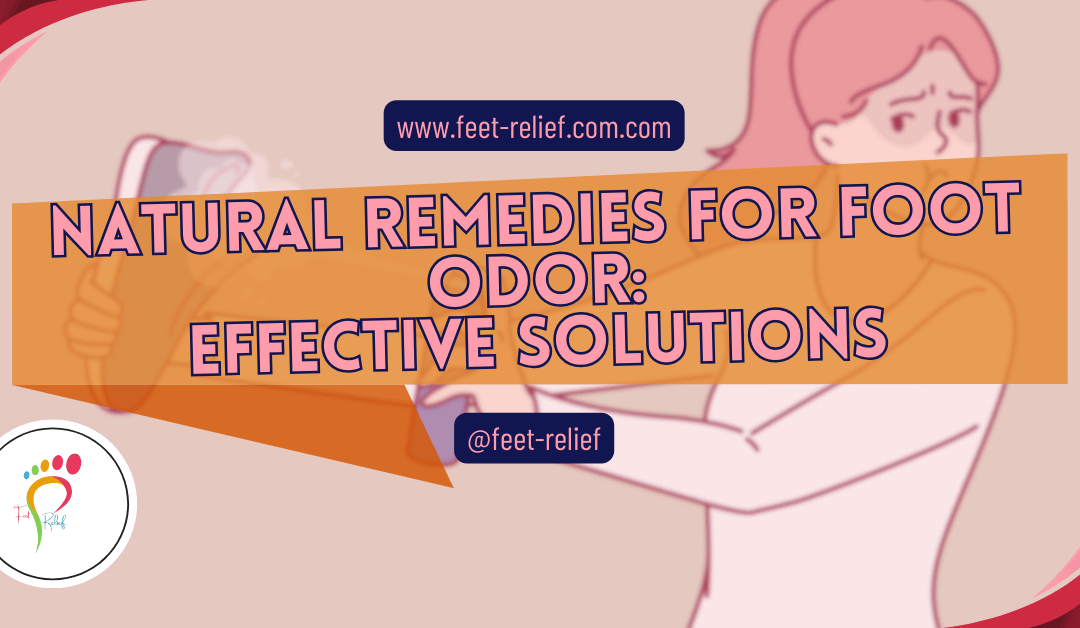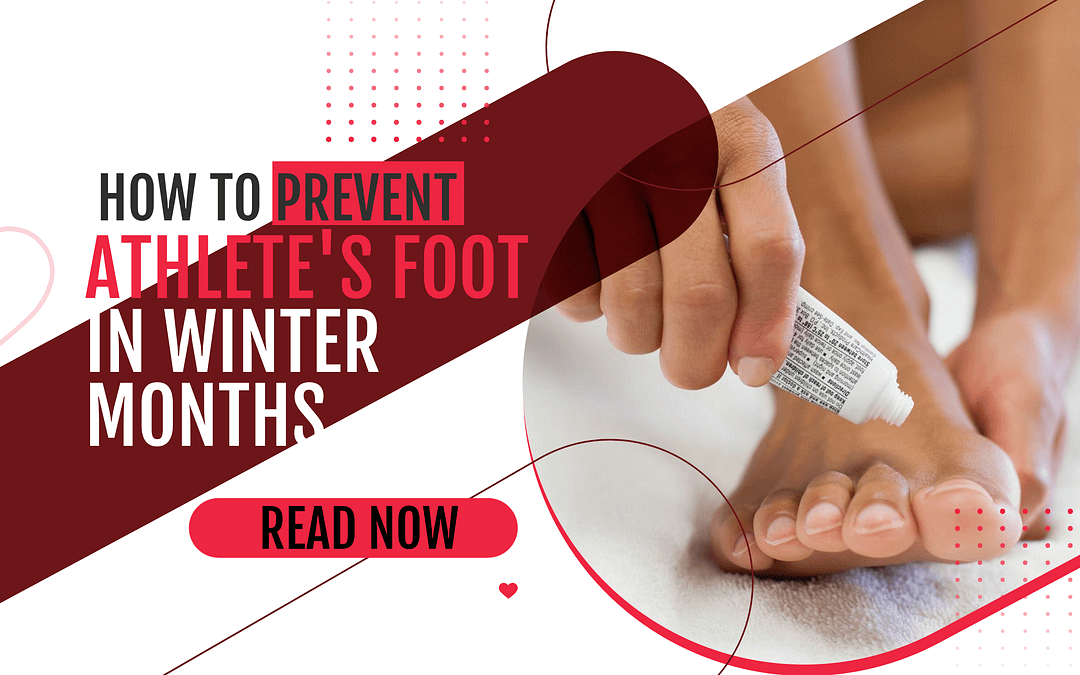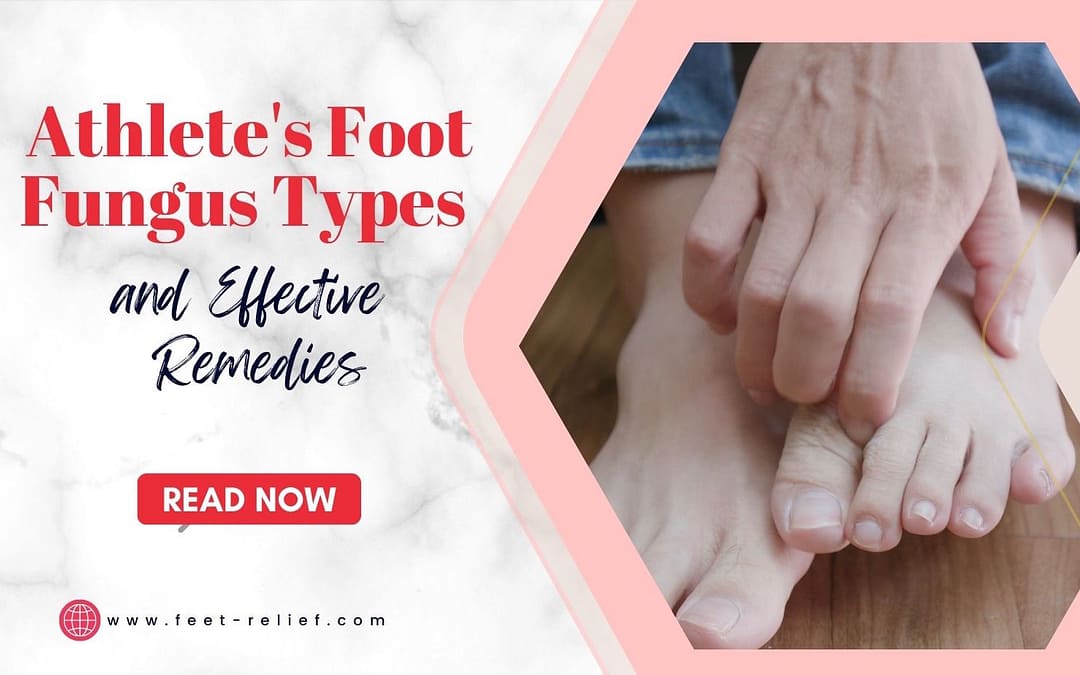
Fresh Feet Made Easy: Natural Remedies for Foot Odor
Imagine confidently stepping into any room, knowing your feet exude freshness. Foot odor, though common, can pose as a lurking enemy, hiding within socks and shoes, ready to sabotage your self-confidence.
But fear not, for in the battle against foot odor, natural remedies for foot odor are just waiting to be discovered. From the soothing embrace of tea-based foot soaks to the odor-absorbing magic of baking soda and the aromatic allure of essential oils, the journey to odor-free feet begins with simple, natural ingredients in your home. Come along with us as we explore the amazing benefits of these natural remedies, paving the path to a future where each step brings a sense of freshness and confidence. Let’s journey together toward the promise of naturally fresh feet.
Natural Remedies for Foot Odor: Effective Solutions for Fresh and Clean Feet
Foot odor can be an embarrassing and often persistent issue many people experience. Caused by bacteria thriving on the feet, unpleasant odors arise when sweat and bacteria combine, creating an environment many would rather avoid. Addressing this problem doesn’t always require a trip to the store or a prescription; instead, natural remedies can offer effective solutions right from the comfort of your own home. Utilizing items such as tea soaks, baking soda, and essential oils, individuals can combat foot odor by employing methods that are not only natural but also easily accessible.
Understanding the root causes of foot odor is essential in preventing it. This includes maintaining proper foot hygiene, choosing the right footwear, and considering diet’s impact on body odor. While daily washing is crucial, integrating natural foot soaks and powders can directly address the bacteria and sweat. Being mindful of foot health and hygiene can lead to long-term relief from foot odor.
Key Takeaways
- Regular hygiene practices are fundamental in controlling foot odor.
- Natural remedies like tea soaks and essential oils can effectively eliminate bacteria on feet.
- Choosing proper footwear and paying attention to diet are important preventive measures.

Understanding Foot Odor
Video Credit: @DrTomBiernacki
Foot odor is a common concern that can be attributed to various factors. Your daily activities, hygiene habits, and choice of footwear all play a role in developing foot odor.

Causes of Foot Odor
Foot odor typically originates from sweat and the interaction between your feet and shoes. When your feet sweat, the moisture becomes trapped in your socks and shoes, creating an ideal environment for bacteria to thrive. Factors contributing to excessive sweating include:
- Physical activity: Engaging in sports or intense exercise can increase foot perspiration.
- Hyperhidrosis: A medical condition characterized by excessive sweating unrelated to heat or exercise.
- Stress: Emotional stress can trigger sweat production, including on your feet.
Bacteria and Sweat
The primary culprit behind foot odor is the bacteria on your skin. These microorganisms feed on sweat and dead skin cells, producing isovaleric acid, which gives off a characteristic unpleasant smell. Different bacteria play roles in foot odor:
- Staphylococcus hominus: Commonly associated with body odor.
- Corynebacteria: Contribute to the smell by breaking down sweat.
- Brevibacteria: Also known to cause strong odors, often compared to cheese.
Shoe Material Impact
The material of your shoes significantly affects foot odor. Breathable materials, like leather and canvas, allow for air circulation, reducing moisture buildup. In contrast, shoes made from synthetic materials tend to trap moisture and provide a breeding ground for bacteria. To minimize foot odor, consider these shoe material options:
- Natural fibers: They provide better ventilation for your feet.
- Moisture-wicking linings: These can help keep feet drier.
- Mesh panels: For enhanced airflow in athletic shoes.

Daily Hygiene Practices
Incorporating routine measures into your daily hygiene can significantly reduce foot odor. Natural remedies for foot odor prioritize cleansing, keeping your feet dry, and choosing appropriate socks.
Proper Foot Washing Techniques
Video Credit: @wikiHow
Step 1: Use a soap that is effective against bacteria and wash your feet thoroughly to remove dirt and sweat contributing to odor.
Step 2: Scrub between your toes and the entire foot surface, ideally with a washcloth or brush, to ensure all bacteria are removed.
Importance of Dry Feet
After washing, pat your feet dry with a clean towel, especially between the toes. Dampness encourages bacterial growth, so it’s crucial your feet are completely dry, especially between the toes, to prevent bacterial growth.
Sock Selection Tips
- Material: Opt for socks made of wool, bamboo, or special antibacterial fabrics that wick away moisture.
- Change Frequency: Change socks daily, or more often if you sweat excessively, to keep your feet fresh.
Natural Remedies Overview
In this section, you will learn about the advantages of natural remedies for foot odor and how they compare with commercial products.
Benefits of Natural Solutions
Safety: Natural remedies often involve ingredients found in your home, such as baking soda or essential oils, which are gentle on your skin.
Cost-Effectiveness: Utilizing household items for foot odor can be more economical than purchasing specialized foot-care products.
Comparison with Commercial Products
Ingredients Transparency: With natural remedies, you know exactly what you’re applying to your feet, unlike some commercial products, which may contain a mix of chemicals.
Environmental Impact: Your choice of natural foot odor remedies can be more eco-friendly, as it reduces the need for packaging and manufactured chemicals.
Home-Made Solutions
Video Credit: @ehowhealth
Simple ingredients found in your home can be crafted into natural remedies for foot odor. From tea-based foot soaks to baking soda applications and vinegar soaks, these natural remedies offer a simple yet powerful way to keep your feet fresh and odor-free.
Tea-Based Foot Soaks
You can reduce foot odor by preparing a foot soak using tea. Boiling two tea bags in a pint of water, allowing them to steep, and then diluting with two quarts of water creates a mixture you can use to soak your feet. A tea-based foot soak can be performed for 15 to 30 minutes each day to help eliminate odor.
Baking Soda Applications
Baking soda is known for its odor-absorbing properties. Sprinkle baking soda inside your shoes or socks, or apply a paste made of baking soda and water to your feet. As a natural deodorant, baking soda applications can help neutralize foot odor and absorb excess moisture.
Vinegar Soaks for Feet
Vinegar creates an acidic environment that can reduce bacteria on your feet. Mix one part vinegar with two parts water to create a soaking solution. Immersing your feet in a vinegar soak for 20 minutes can assist in reducing odor-causing bacteria. Avoid using vinegar if you have open sores or wounds on your feet.
Essential Oils for Foot Odor
Essential oils possess natural antibacterial properties, which can effectively combat the bacteria that cause foot odor. When used properly, they provide a safe and natural way to address unpleasant smells while refreshing your skin.
Lavender Oil Use
Lavender oil is renowned for its calming scent and is also a powerful ally against foot odor. Its antibacterial properties help to eliminate the bacteria that contribute to unpleasant smells. To use, add a few drops to a foot bath or make a homemade foot scrub with sugar and olive oil.
Tea Tree Oil Benefits
Tea Tree oil stands out as one of the most potent essential oils for fighting foot odor due to its strong antimicrobial properties. It is a go-to solution for killing bacteria and fungi. Mixing a few drops of tea tree oil with a carrier oil and applying it to your feet can help keep them fresh and clean.
Peppermint Oil for Refreshing Feet
Peppermint oil, besides having a refreshing scent, offers a cooling effect that revives tired feet. Its antimicrobial properties can help neutralize foot odor and are an excellent addition to a DIY foot soak. Just a couple of drops of water can provide instant relief and a refreshing experience.
Video Credit: @wayofwill8034
Dietary Considerations
Your diet plays a crucial role in managing foot odor. By understanding which foods to avoid and what dietary changes can help, you can reduce unpleasant smells.
Hydration for Reducing Odor
Staying well-hydrated is essential for minimizing foot odor. Water helps to flush toxins out of your body, which can reduce the buildup of bacteria on your skin.
Foods to Avoid
Certain foods can increase sweat production or lead to more pungent body odor. Consider limiting:
- Garlic and onions: These foods have strong scents that can be excreted through your pores.
- Spicy foods: Can cause your body to sweat more, leading to an increase in foot odor.
- Refined carbohydrates and sugary foods: May contribute to the growth of smell-producing bacteria.
Beneficial Dietary Changes
To combat foot odor, integrate foods that can naturally reduce perspiration and bacteria growth:
- Whole grains and leafy greens: Support overall digestion and may reduce sweat and body odor.
- Probiotics: Found in yogurt and fermented foods, these can balance the bacteria in your body.
- Zinc-rich foods: Shellfish, nuts, and seeds can potentially reduce foot odor.
Choosing the Right Footwear
The right footwear is crucial in managing foot odor. Selecting materials that allow your feet to breathe, shoes that fit correctly, and rotating your shoes can significantly reduce the incidence of unpleasant smells.
Breathable Materials
Materials matter for the health of your feet. Shoes made from natural materials, like leather or canvas, allow for better air circulation around your feet, reducing the moisture buildup that leads to odor. When shopping, seek out shoes labeled as “breathable.”
Proper Fitting Shoes
Shoes that fit well are less likely to cause sweating, which can contribute to odor. Your shoes should have enough space to wiggle your toes but still provide support. If your shoes are either too tight or too loose, they can promote sweating and increase the risk of foot odor.
Alternating Shoes to Reduce Odor
Let your shoes breathe. Rotating between different pairs of shoes gives them time to air out and dry, preventing the proliferation of bacteria and fungi. Aim to not wear the same pair two days in a row and consider using open shoes like sandals when possible.
Preventative Measures
Taking proactive steps can significantly reduce foot odor. These include keeping your feet dry, using products that target the causes of the smell, and ensuring your footwear remains clean.
Antifungal Powders
Antifungal powders can be a key line of defense against foot odor. Applying powders like baking soda creates an inhospitable environment for the yeast and fungus that contribute to smelly feet.
Foot Deodorants
Incorporating foot deodorants into your daily routine can also help. These products often contain ingredients like lavender oil, which has a pleasant fragrance and antibacterial properties to reduce odor.
Maintaining a Clean Shoe Environment
Lastly, maintaining a clean shoe environment is crucial. Alternating shoes to give them time to air out and using shoe sanitizers can minimize the presence of odor-causing bacteria. Regularly washing your footwear, when applicable, will also contribute to a fresher scent.
Embrace Natural Remedies for Foot Order

Combatting unpleasant foot smells doesn’t have to be a daunting task. By incorporating mindful hygiene practices and using natural remedies for foot odor, you can now step confidently into any situation. From tea-based foot soaks to essential oil treatments and dietary adjustments, reliable and affordable solutions are within reach. So why wait? Start your journey to naturally fresh feet today and stride forward with confidence and comfort.
Frequently Asked Questions
If you’re looking for natural remedies to combat foot odor, this section provides practical solutions to common inquiries to achieve clean and healthy feet.
What natural methods are effective for permanently eliminating foot odor?
Consistent foot hygiene paired with daily use of foot deodorizers such as soaking in black tea is known to reduce sweating and eliminate bacteria that cause odor.
Which home remedies can prevent my feet from smelling in shoes?
Wear socks made from natural materials to absorb sweat, and consider sprinkling baking soda inside your shoes to neutralize odors. Applying foot powders or natural antiperspirants can also prevent odor.
What causes persistent foot odor even after proper hygiene?
Persistent foot odor can occur due to excessive sweating that provides an environment for bacteria to thrive. It might be a sign of hyperhidrosis or a fungal infection, requiring more targeted treatments.
What are quick, natural solutions for stinky feet?
Applying rubbing alcohol to your feet can quickly dry them out and reduce odor. Using lemon juice or vinegar as a natural astringent can be a fast-acting solution as well.
Can baking soda be used to treat foot odor, and how should it be applied?
Yes, baking soda can be used to treat foot odor by absorbing moisture and neutralizing pH levels. Sprinkle it on your feet and in your shoes regularly to manage odor.
Are there any natural foot soaks that can detoxify and reduce foot odor?
Foot soaks with Epsom salts, apple cider vinegar, or baking soda can detoxify feet and reduce odor. A black tea soak can also be particularly effective due to the tannic acid present in the tea.
Step into Comfort: Explore Feet-Relief.com Today!
👣 Ready to step into a world of comfort and wellness? Look no further! Our website is your ultimate destination for all things foot care and relief.
💡 Discover expert tips and advice on foot care routines, exercises, and remedies to keep your feet happy and healthy for years.
🔍 Dive into our informative articles and guides to find the perfect solutions for your foot health concerns.
🚀 Join our community of satisfied customers who have found relief and comfort through our products and services.
👟 Don’t let foot pain hold you back! Visit Feet-Relief.com today and take the first step towards happier, healthier feet!






































